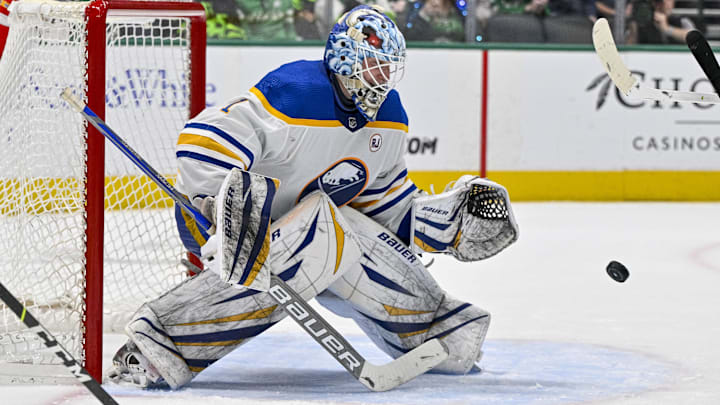The Sabres top offseason moves weren’t all what I would have done, even if I will admit the team looks better now than it did one season ago. Sure, we were expecting playoffs last season, but Jack Quinn’s injury still left myself and many of us with that nagging feeling that 2023-24 could be a disaster.
And disaster it was, or at least that was the case to an extent. The Sabres dipped below expectations and ended the year with seven fewer points than they had the previous season, and it led to the firing of Don Granato before general manager Kevyn Adams quickly brought back head coach Lindy Ruff.
Knowing Ruff’s previous accomplishments in Buffalo, you can call that the most effective offseason move for a potential rebound in 2024-25. But it wasn’t the only transaction that made the Blue and Gold a better team. Like I said, I wasn’t fond of some of the following moves, but I also can’t help feeling more confident in the 2024-25 version of the team.
5 - Acquiring physical lower-line forwards to change the team’s identity
They weren’t the most glamorous pickups, but for years, the Sabres seemed to be afraid to land body checks on opponents. Last season, that number sat at a modest 21.7 hits per game, and while it was better than what we saw in 2022-23 (14.2 hits per game), the Sabres weren’t intimidating anyone until they solved this problem.
Sam Lafferty, Beck Malenstyn, Nicolas Aube-Kubel, and Jason Zucker will all provide sound remedies. Jordan Greenway is already a big hitter, and Dylan Cozens is also trending north along with Peyton Krebs, giving the Sabres a plethora of physical forwards they haven’t had in ages.
Under Lindy Ruff’s system, look for the Sabres to be far edgier than they have been over the past few seasons, and it won’t just be limited to the bottom-six - not that (perhaps) Jason Zucker or Dylan Cozens will find themselves playing there - but expect the entire team to take their physical play up at least a notch.
